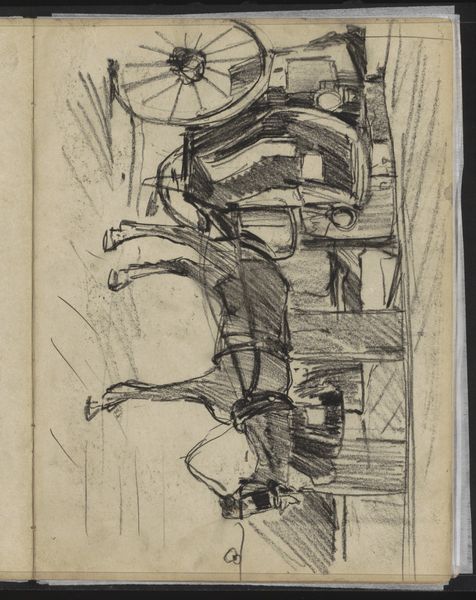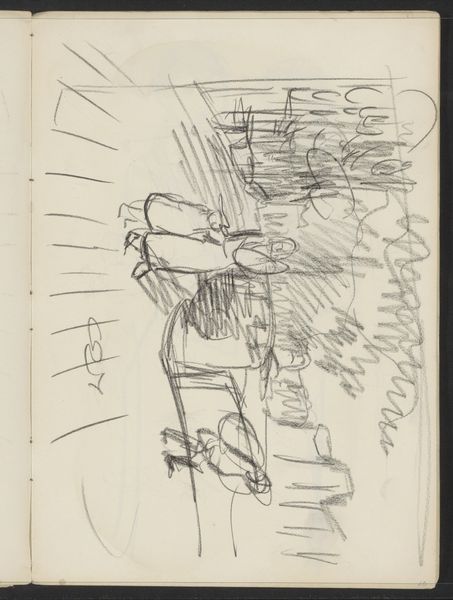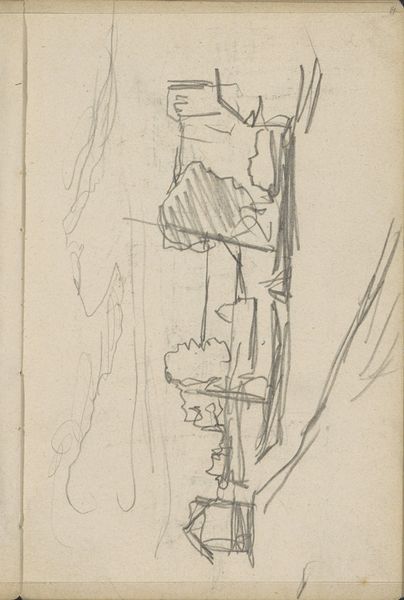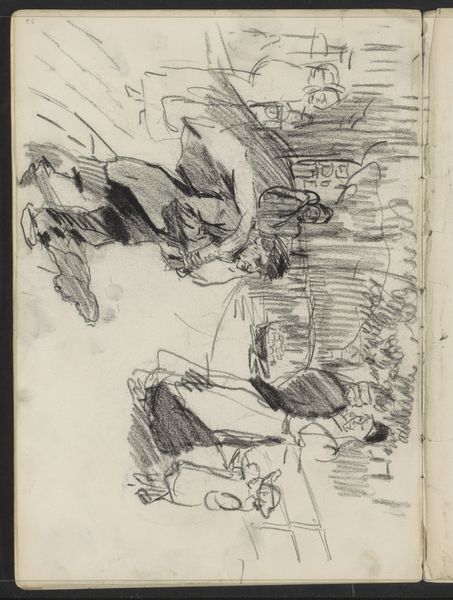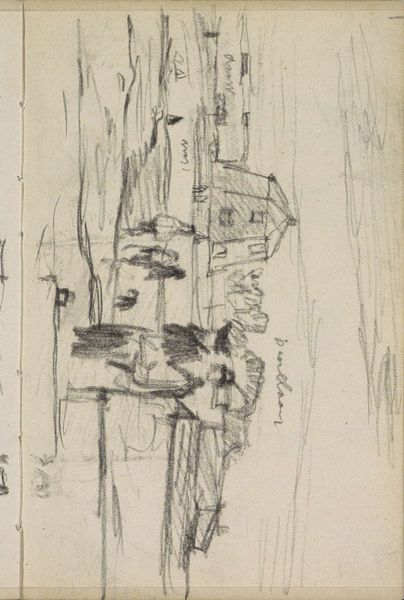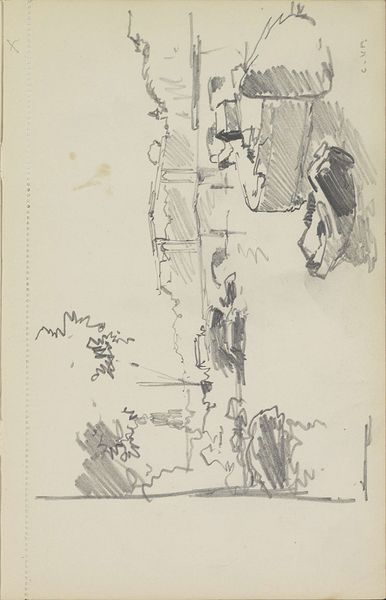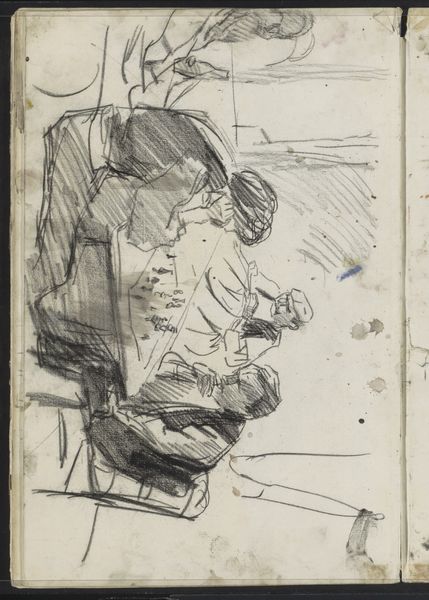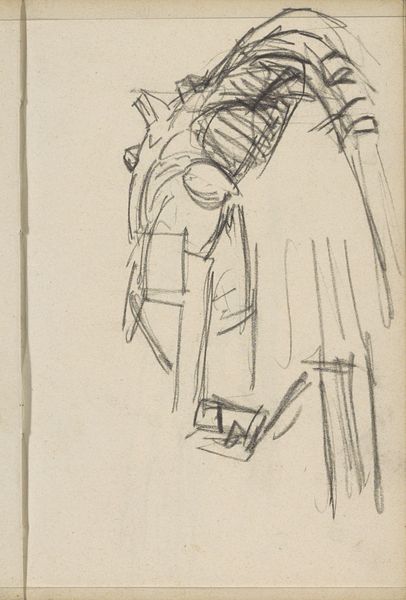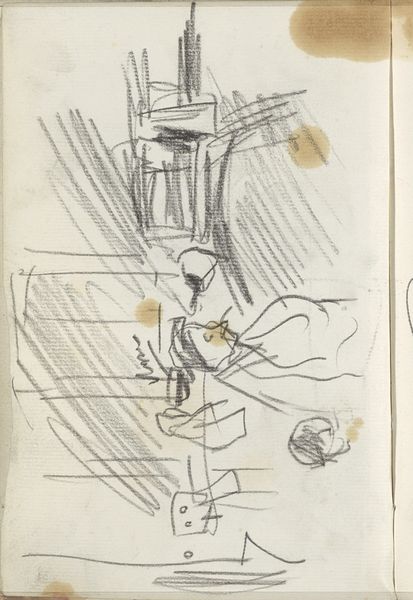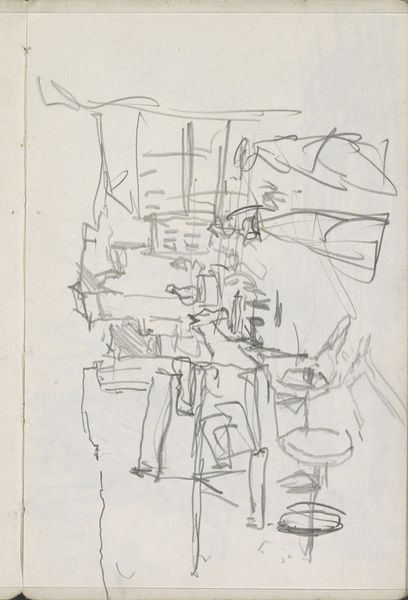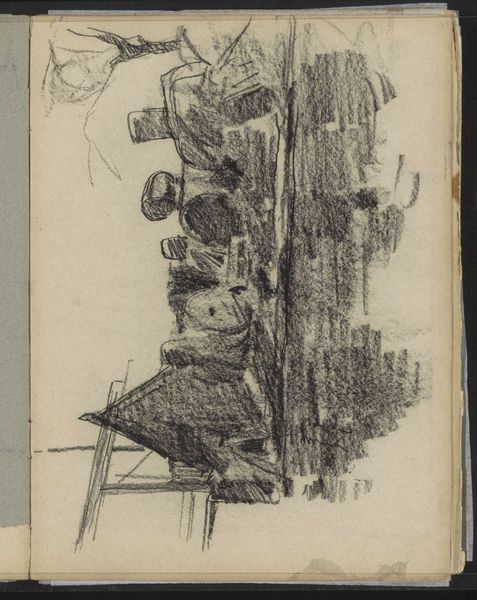
Copyright: Rijks Museum: Open Domain
Editor: This is "Voorbijgangers op de Herengracht te Amsterdam," or "Passersby on the Herengracht in Amsterdam," a pencil drawing by Isaac Israels, created sometime between 1886 and 1934. It's so sparse, just lines really, but captures the feeling of movement and a bustling city street. What jumps out to you about this piece? Curator: Note how Israels meticulously employs line as the primary structural element. Observe the variation in line weight and density; thicker, darker lines define the figures and architectural details, providing a sense of groundedness. Simultaneously, the sketch-like quality imparts an ephemeral feel to the figures. Editor: I see what you mean about line weight, the figures are grounded while everything else is lighter. Curator: Exactly. Also, consider how the composition leads the eye. Notice how the strong diagonal lines imply movement of a body and, in conjunction with the lines, generate the illusion of depth despite the artwork’s essentially two-dimensional nature. Editor: Yes, the angle does create that sense of depth, and the line creates rhythm. Are there other compositional techniques to examine? Curator: It seems the lines used for shadowing have created tonal contrast adding depth and drama. By directing our attention through calculated marks and placement, he’s created visual interest through structural components alone. How does that visual interpretation resonate for you? Editor: It makes sense! By looking at it as a collection of lines instead of a scene, I appreciate how thoughtfully structured the piece really is. Thanks! Curator: Indeed! Examining solely the aesthetic considerations – composition, lines, contrast, depth, perspective - reveals how the visual components form a unified experience.
Comments
No comments
Be the first to comment and join the conversation on the ultimate creative platform.
